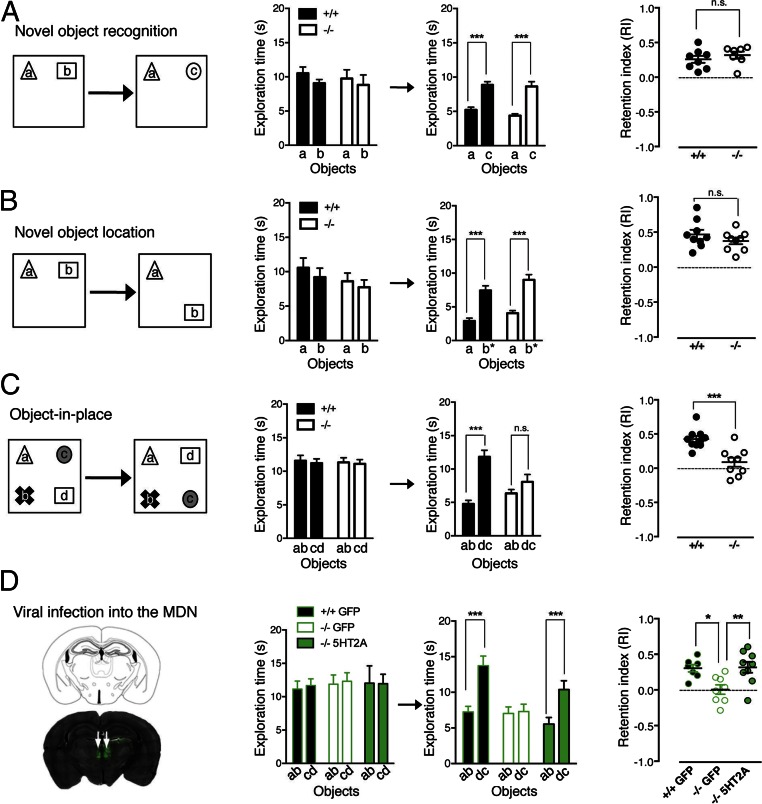Fig. 6.
Presynaptic 5-HT2A receptors at thalamocortical synapses are essential to associative learning. (A–C) Performance of WT (black bars) and 5-HT2A−/− (white bars) mice in the novel-object recognition (A), novel-object location (B), and object-in-place (C) tasks performed using a 1-h intersession delay. Schemas of the protocols used for the different tasks are shown (Left). The plots on the right show the recognition memory for each task, expressed as the retention index. During the 5-min exploration phase, the mice within each group spent the same time exploring each of the two or four objects (Left histograms). “a,” “b,” “c,” and “d” represent the different objects used during the task, as shown Left. After a 1-h delay, the absence of 5-HT2A receptors does not alter novel object recognition or object location performance (A and B) but affected the performance of mice in the object-in-place test (C). (D) Expression of 5-HT2A receptors in the thalamus MD nuclei (MDN) of 5-HT2A−/− mice restores the WT phenotype in the object-in-place test. The image on the left illustrates the efficient re-expression of 5-HT2A receptors, as assessed by GFP detection, in the MD nuclei of 5-HT2A−/− mice 24 h after the injection of viral particles. *P < 0.05; **P < 0.01; ***P < 0.001; n.s., not significant, Mann–Whitney test, n = 7–10 mice per group.

